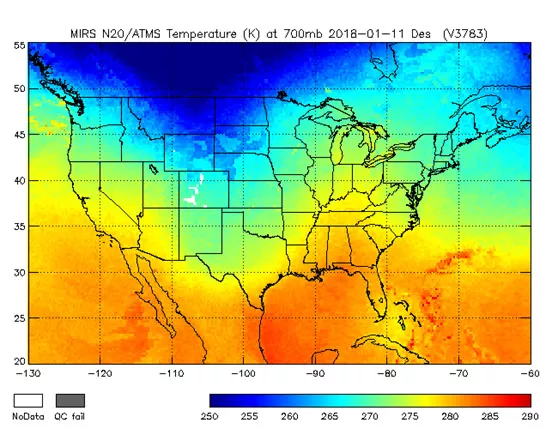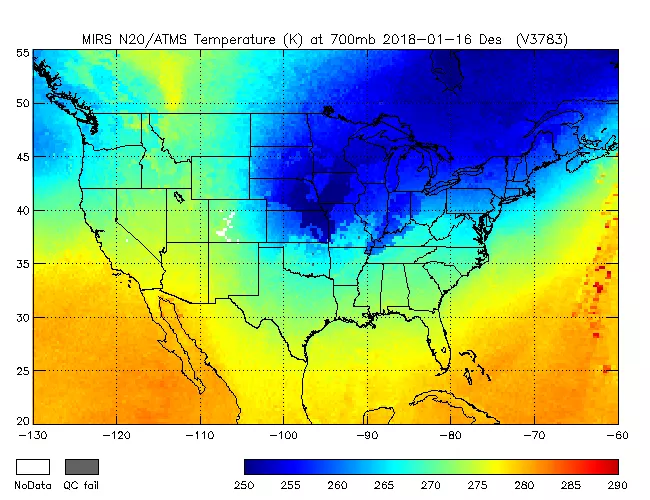

NOAA-20 captured these two images of North America five days apart (January 11, 2018 and January 16, 2018). Note the contrast in the surface temperature (blue = cold) between the two images associated with a sharp dip in the jet stream over the US Midwest. The difference in temperature between the two dates is more than 54 degrees Fahrenheit (30 degrees Celsius). Surface temperature observations confirm this extreme contrast: in Calgary, Alberta, the afternoon high temperature was 45°F on January 16th, whereas just five days earlier the afternoon high was only -15°F. In Nashville, Tennessee the opposite fluctuation occurred: on January 11th the high was a mere 17°F but five days later had reached 69°F. This pattern reversal is indicated in the NOAA-20 imagery, which shows the warmth focused in the eastern US, and sharply colder arctic air moving south into west-central Canada.
This imagery is the first science data received from NOAA-20’s Advanced Technology Microwave Sounder (ATMS) Microwave Integrated Retrieval System (MiRS) technology. MiRS produces maps of temperature, water vapor, precipitation, snow and ice cover each day. The products from MiRS are preliminary, and non-operational. It is running experimentally on NOAA-20 until it is declared operational later this year.
Mapping the global patterns of temperature from NOAA-20 will help in a range of efforts, from identifying regional climate changes, to locating areas of extreme cold in the upper atmosphere, which can pose hazards to commercial aviation. Global observations from ATMS and other microwave sounders provide the critical data source needed by weather forecast models to predict these weather patterns out to 7 days.
Image processing by NOAA/Center for Satellite Applications and Research.
Contributors:NOAA/NESDIS/STAR MiRS Algorithm Development Team and JPSS Program Science
